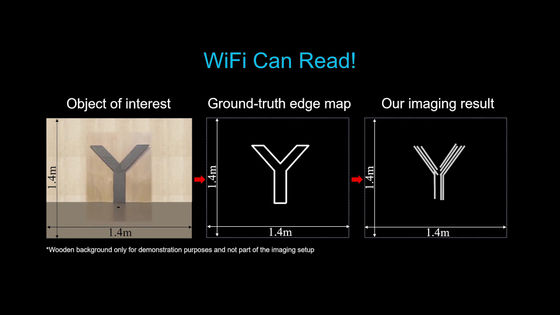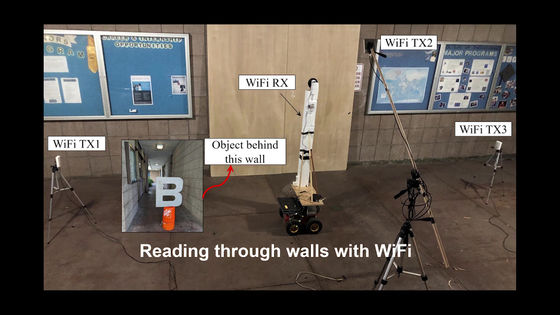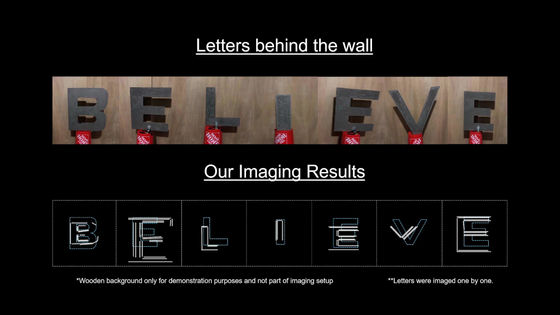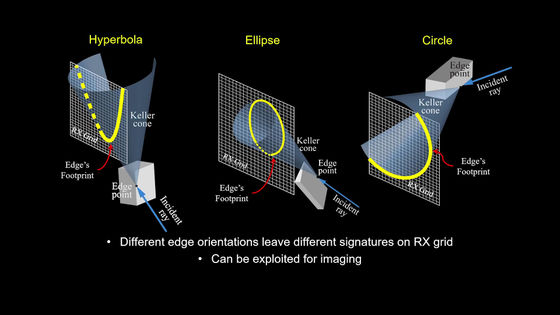A technology that allows you to 'see through' stationary objects behind a wall using Wi-Fi has appeared

Until now, technologies have been devised
Reading Through Walls With WiFi
https://web.ece.ucsb.edu/~ymostofi/WiFiReadingThroughWall
Wifi can read through walls | The Current
https://news.ucsb.edu/2023/021198/wifi-can-read-through-walls
At the 2023 IEEE Radar Conference (RadarConf23) held by the Aerospace Electronic Systems Association (AESS) and others in May 2023, a research team led by Yasamin Mostofi of the University of California, Santa Barbara, demonstrated that it was possible to see objects through walls using Wi-Fi. We announced a technology to see
You can see how it actually looks through from about 3 minutes and 30 seconds after the start of playback of the following movie.
WiFi Can Read Through Walls - YouTube
First, the research team conducted an experiment without any shielding. 'V' and 'H' are objects imitating the alphabet, and TX1 to 3 are Wi-Fi transmitters. Additionally, radio controls with wheels are equipped with a receiver.

This experiment confirmed that the shape of the alphabet can be imaged fairly accurately using Wi-Fi.

Next, let's look through the wall.

As a result, the word 'BELIEVE' could be read through the wall as an image.

This technique uses the geometric optical diffraction theory proposed by mathematician Joseph Keller . According to this theory, when a high-frequency signal hits an object, a conical 'Keller cone' is generated along the edge of the object.

The basic mechanism of a technology called ``Wiffract'' developed by the research team to capture stationary objects is to estimate the outline of an object by reading this Keller cone with a two-dimensional reception grid.

Mr. Mostofi said that this technology will become important not only for everyday things such as smart homes, but also for structural health inspections of buildings, search operations during disasters, and excavation sites where scientific investigations are conducted. .

Related Posts:







